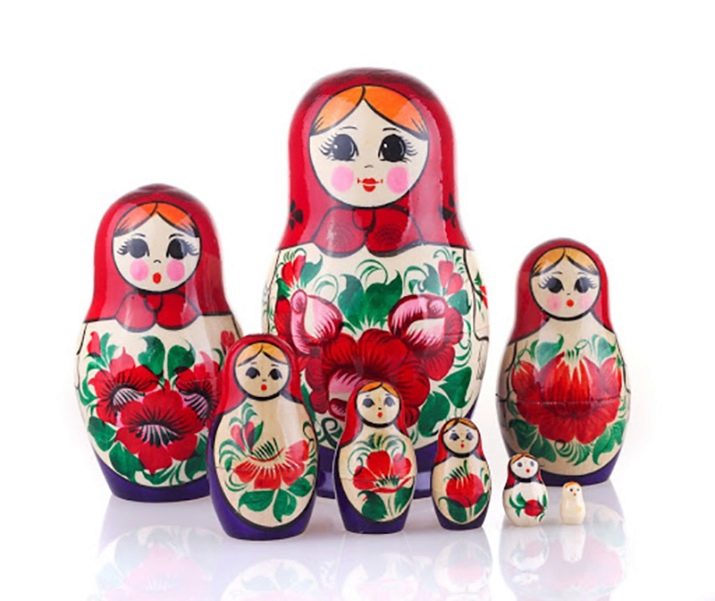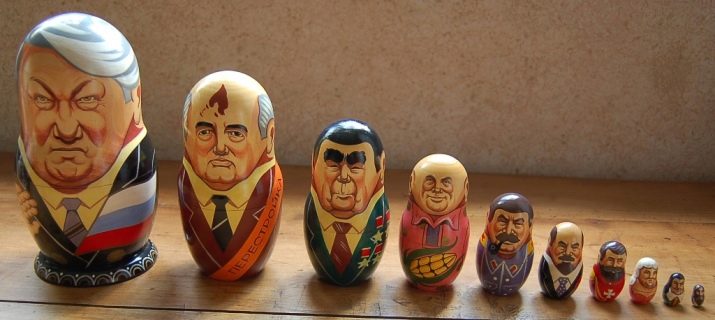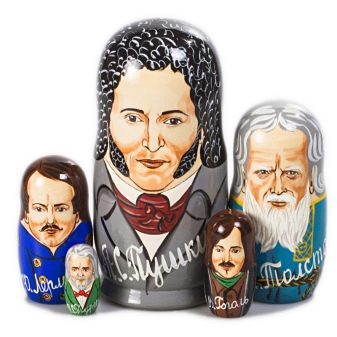Everything you need to know about nesting dolls

Without exception, both children and adults living in Russia know what a matryoshka looks like, which many perceive as a symbol of our country. However, not everyone is familiar with the history of the origin of this doll. In this article you can familiarize yourself with the description of the matryoshka, as well as learn a lot not only about the history of its creation, but also about its varieties.

What it is?
Matryoshka is a folk toy of great importance for the Russian people. She looks like a painted wooden doll, or rather, a whole set of dolls: inside the largest matryoshka there are dolls similar to her, but in a smaller size. As a rule, such a set contains at least three nesting dolls.
Each of the dolls has a flat bottom and is shaped like an egg, consisting of two parts that can be easily connected and disconnected.

The traditional version of the Russian nesting doll looks like a woman dressed in a sundress and a scarf. In general, the toy could be painted in different ways - for example, Khokhloma, Gorodets or Dymkovo painting. Everything depended on the preferences of its creator.

History of creation
How the first wooden doll, named matryoshka, appeared in Russia, is an interesting story and at the present time is still not entirely clear. Many believe that this toy comes from Japan itself. According to this version, one of the Russian masters saw a Japanese figurine and decided to make a similar one in his own way.
In the Japanese version of this toy, there were also several smaller figures, and it symbolized the deities that brought people happiness.

However, it is impossible to say for sure that everything was exactly like that, because such figures are also found in Chinese and Indian cultures. Most are still inclined to the version that the matryoshka was created during the period when the master was inspired by Slavic culture.

With a toy maker, everything is much easier. He is Vasily Zvezdochkin, who lived in Podolsk and claimed that he had never seen any analogs of nesting dolls from Japan before. The first nesting doll was created in 1890, and Sergey Malyutin is considered the creator of its sketch.

This doll looked like a girl holding a black rooster in her hands. It did not differ much from the traditional version of the toy: inside it there were several more figures, the last of which was a swaddled baby. The toy eventually got its name from the name common at that time - Matryona.

Already in 1900, the doll went to the world exhibition in Paris and received a bronze award there. This was the impetus for the distribution of the toy, it began to be made in many places.
Used for this, as a rule, linden - its wood was softer and did not crack during drying.

Views
There are many types of nesting dolls: Voronezh, Tver, Tyumen and even Turkish. There are also designer toys of this kind, which are made to order. Below we will talk about the varieties of nesting dolls, which, depending on their place of creation, have characteristic distinctive features.
Zagorskaya
The folk craft that arose on the lands of Sergiev Posad is called the Zagorsk matryoshka. The creation of such toys was actively pursued in the middle of the last century, when a large number of workshops were actively functioning in the city. The fishery continues to develop now.

This type of matryoshka has distinctive features: its painting is simplified, it actively uses colors such as red, yellow, blue and green. As a rule, the outlines of the elements of such nesting dolls, including the face and clothes, are either outlined in black or burned out.

Such a doll is dressed rather modestly. Her apron imitates fabric decorated with peas or simple-looking flowers. The arms of such a doll are either lowered or in a bent position. In the latter case, you can see a basket, a pet or an accordion in them.

Semenovskaya
This type of nesting dolls originated in the last century, namely in 1929. This year in Semyonov, which is located in the Nizhny Novgorod region, an artel was opened for the production of wooden dolls. A few years later, a factory appeared on its basis, which was named "Semyonovskaya painting". It happened in 1932, and the factory itself functions to this day.

In the painting of Semyonovskaya matryoshka, one can easily find such an artistic motive as Khokhloma, as well as elements of Fedoseevskaya or Merinovskaya painting. As a rule, such a toy looks bright, its hair is black, and there is a scarf on its head. Her hands usually do not stain, and her apron is covered with chamomiles, large roses or blue forget-me-nots, and the flowers must have leaves of a rich green hue. The lower part of such a toy is usually painted yellow.
Separately, it should be said about the author's Semyonov nesting dolls. They are made to order, and their painting is usually distinguished by its intricacy.

Polkhov-Maidan
Polkhov-Maidan is a small village in the Nizhny Novgorod region. They began to make nesting dolls there since 1920. The dolls produced in this place also have a number of distinctive characteristics: they are very elongated in length and have a small head. They are usually painted with red, blue, green and yellow colors. The hands of such pupae are usually lowered, or they contain a tray on which a loaf flaunts.

Not far from this place is another village, where they also create matryoshka dolls, called Krutitsky ones. They are in many ways similar to the Polkhov-Maidan dolls.The cool matryoshka is distinguished only by its slenderness, stateliness and rich painting, in which there are large and bright floral elements.

Other
There are other places where matryoshka dolls are made - for example, Vyatka. There you can find the northernmost dolls, which are in many ways similar to the girls of the North: their hair is light or reddish, and their eyes are blue. Vyatka dolls are also distinguished by the softness and friendliness of facial features and a sweet smile. In their hands, you can often see either a flower bouquet or a tray with a traditional loaf. The craft for the creation of nesting dolls began to form around 1930, this process ended only closer to the 60s.

There is also a Tver nesting doll - the most beautiful, in the opinion of many. As a rule, it is painted with gold paints, thereby imitating the Khokhloma painting. In addition, they have a special shine, which makes the doll look like a painted Easter egg. The outfit of such a doll looks rich: a festive dress, beads hang on its neck, and a gilded headdress can be seen on top. The scarf of such a nesting doll is usually painted red, and on the apron you can see large pink flowers with green leaves, which are located on a black background.

The most prominent of this list is the Voronezh nesting doll. Its head is slightly pointed, which makes the toy look like an egg. This is explained by the fact that in ancient times, when the craft of creating such dolls had just appeared, overweight girls were the standard of beauty. Such dolls are painted in full accordance with the folk costume of the Voronezh province, which easily reads age, profession and social status. Another distinctive feature of this nesting doll is a red ram shawl and a black traditional skirt, which is divided into squares by reddish stripes.
This color personifies the black soil, which was divided into allotments.

Matryoshka dolls in the modern world
At the present time, a bright and welcoming-looking nesting doll is considered one of the main symbols of Russia. It is sold in many shops; foreigners often bring it home as a souvenir.

The development of this fishery is now proceeding as actively. However, at the present time, the number of options for painting this toy has significantly expanded: they began to create unusual portrait nesting dolls, transferring the features of a particular person to the tree, as well as doll parodies of politicians.

At the present time, author's nesting dolls are being created, made in the form of famous characters. Popular characters from books and movies, historical figures and more can also be depicted as nesting dolls.


Exclusive versions of such dolls are also being created. This is done, as a rule, on order. Some of these toys can hold about 50 slightly smaller figures. However, the most popular are nesting dolls in the set of which there are 5 or 7 toys.




